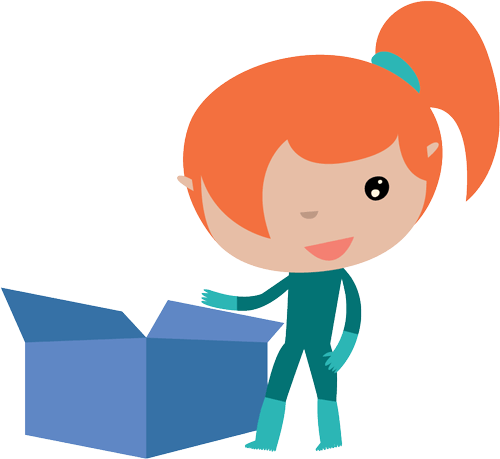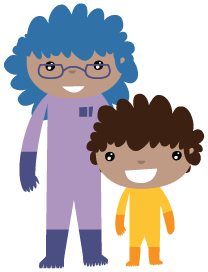

Be a Brain Builder
The First 1,000 Days
The first 1,000 days of a child’s life are so important. Because of this, we have partnered with Vroom, a program that has created great tools and materials. Vroom shares, “New science tells us that our children’s first years are when they develop the foundation for all future learning. Every time we connect with them, it’s not just their eyes that light up – it’s their brains too. In these moments, half a million neurons fire at once, taking in all the things we say and do. We can’t see it happening, but it’s all there, all at work.” The featured activities below are from Vroom.
Look
Even before babies can talk, they’re showing you what they’re interested in. Look into their eyes, or at what catches their eye, and begin brain building!
Open Resources
Featured Activity:
Share a Stare
As you hold your child, look into their eyes and make a silly face or sound. See how your child reacts. Do they laugh? Smile? Next, try it again and do something different. This back and forth building block is important for your child to enjoy and communicate with others in the future. It also helps to deepen your relationship with your child.
Chat
It may not seem like it, but the sounds and gestures young children make are their way of communicating with you! So talk out loud together and keep chatting as your children grow, engaging them in learning about the world around them.
Open Resources
Featured Activity:
Sing Talk
Try singing what you are doing, instead of talking in your normal voice. For example, when you are getting dressed, sing to your child about what you are doing. “I am putting on my shirt, putting on my socks…” Take your child’s lead by responding to their sounds and actions, even before they are old enough to talk. When they do start talking, ask follow up questions like “What do you think?” or, “Why did you like that?” When you sing or describe what you are doing, you are helping your child make new and unusual connections. Making up a tune helps your child see you having fun. These types of interactions can promote creativity.
Follow
Powerful brain building moments are created when you let children lead the way, and you follow by responding to their words, sounds, actions and ideas.
Open Resources
Featured Activity:
In the Bag
Before going to an appointment, pick up different items and talk about them as you put them into your diaper bag. For example, “This is a teething ring for you to chew on.” Or, “This is your rattle, if I shake it, it makes a noise.” Talking to your child helps them to build communication skills. It helps them to learn words and make connections between objects and their meaning.
Stretch
Make the moment last longer by building on what your child says, or asking follow-up questions that expand your child’s thinking and learning. When you stretch the conversation with questions like, “What do you think about that?” or “How does that make you feel?” you’re stretching the brain building moment too!
Open Resources
Featured Activity:
Copy Cat
Children experience many different emotions. Make faces that mirror what your child seems to be feeling. Then talk to your child about why you are making those faces. By copying the faces your child is making, you are helping them to express what they are thinking and feeling even though they cannot speak yet. Those conversations without words begin to help a child learn about their feelings.
Take Turns
Back and forth interactions between you and your children are one of the most important ways to help their brains develop. So be sure to take turns while you’re talking, playing, or exploring with your children.
Open Resources
Featured Activity:
Babble On
When your child starts to make noises, treat it like a real conversation and mimic the sounds right back. See how many times you can go back and forth! All kinds of conversations help to build babies’ brains, even when they are learning how to talk. These chats with your child help to form a foundation for language and communication later.
Resources
Helpful Links for Stellar Parents!



